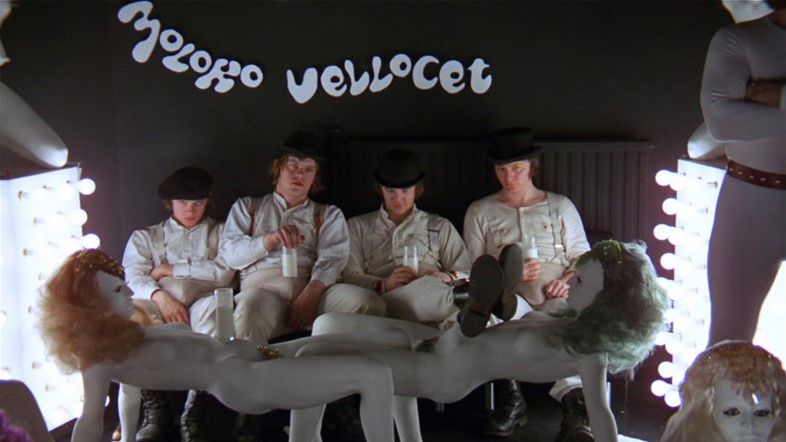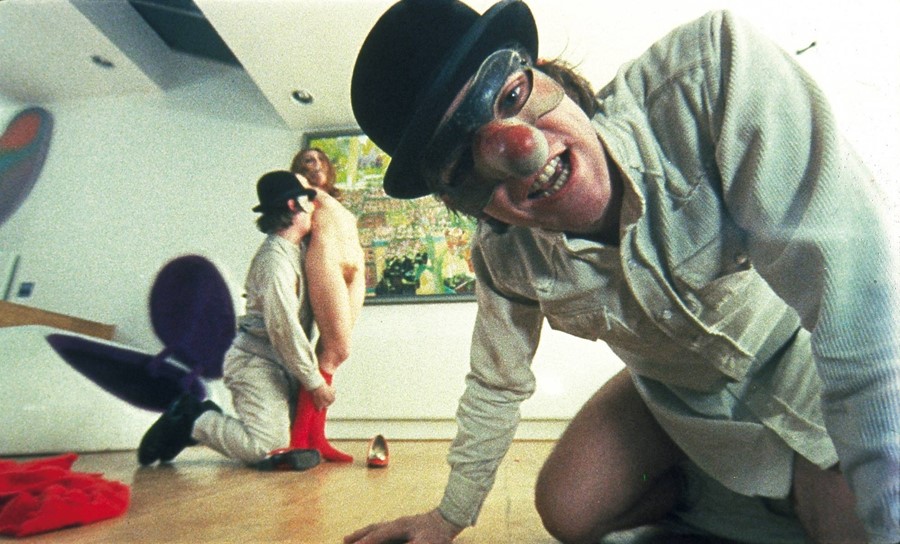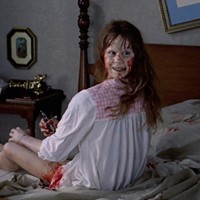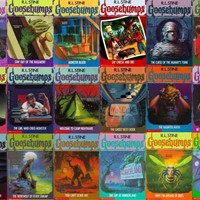Kubrick’s totalitarian terror turns 42 this week, and it strikes a more savage beat than ever
Today in 1971, Stanley Kubrick unleashed his dazzling, demented “ultra-violent” masterpiece, A Clockwork Orange, unto the world. Or rather, the US. Accused of being a "bad pornographer" and glorifying violence, Kubrick’s paen to a dystopian future Britain ignited so much controversy that it was censored before its release in the UK for the next 27 years – the irony of which was probably not entirely lost to the director of scathing socio-political satires like Dr.Strangelove.
Along with Bonnie and Clyde (1967), The Wild Bunch (1969) and Dirty Harry (1971), Clockwork was considered a landmark in the relaxation of control on cinematic violence. The National Catholic Office for Motion Pictures even rated it C for "Condemned," which automatically forbade all Roman Catholics from seeing the film. It was only after Kubrick's death in 1999 that the film reappeared in UK cinemas and was released on VHS and DVD.
So what was so threatening about Kubrick’s portrayal of a charismatic, albeit sociopathic teenager named Alex (the superb Malcolm McDowell), with a penchant for cricket jockstraps and Beethoven’s Fifth Symphony? Based on the Anthony Burgess novella and narrated in Nadsat – a fractured adolescent slang mixing Russian, English and Cockney rhyming slang – Clockwork merely chronicles the horrific crimes of Alex’s gang of “droogs”, his capture, and attempted rehabilitation via controversial psychological conditioning.
“The film was linked to the murder of an elderly vagrant by a 16 year old boy in Bletchley, Buckinghamshire, who pleaded guilty after telling police that friends had told him of Clockwork"
Yes, Kubrick employed graphically violent images to chronicle Alex’s horrific spree through London while hopped-up on “milk plus” (milk laced with drugs), further fuelled by a futuristic Moog synthesizer soundtrack. But today, more hardened viewers might not bat an eyelash while witnessing a woman being gang-raped to the tune of "Singin’ In the Rain" onscreen. After all, the limits of our exposure to pain have already already sorely tested by incredibly realistic and lengthy rape scenes as in Irreversible. And besides, every schoolchild knows that these days, some video games typically offer more adult-friendly entertainment than cinema.
After a series of copycat acts of violence allegedly inspired by his film, Kubrick was forced to withdraw it. In March 1972, during the trial of a fourteen-year-old male accused of the manslaughter of a classmate, the prosecutor suggested that Clockwork had a sinister relevance to the case. The film was also linked to the murder of an elderly vagrant by a 16 year old boy in Bletchley, Buckinghamshire, who pleaded guilty after telling police that friends had told him of Clockwork "and the beating up of an old boy like this one". The UK press also managed to blame Kubrick’s work for a rape in which the attackers also sang "Singin’ in the Rain".

But censorship and youth violence aside, perhaps even more relevant to our times is Clockwork’s atmosphere of authoritarian government policies. Kubrick's film remains relatively faithful to the Burgess novel, but he proactively chose to omit the final chapter where Alex matures and outgrows sociopathy as too blandly optimistic and unrealistic. Whereas Kubrick’s film ends with Alex offered an open-ended government job – implying he remains a sociopath at heart – the Burgess novel ends with Alex's positive change in character.
Kubrick was more interested in exploring society’s heart of darkness and whether it makes sense to use government-backed brainwashing and torture schemes to stop unwanted human behavior. (Guantanamo, anyone?) In Clockwork, after two weeks of the Ludovico Technique – who could forget the forced-open eyeball scenes – the Minister of the Interior puts on a demonstration to prove that Alex is "cured". He is shown to be incapable of fighting back against an actor who insults and attacks him, and becomes violently ill at the sight of a topless woman. So Alex behaves like a good member of society, but not by choice. Instead he has become the titular clockwork orange: organic on the outside, mechanical on the inside.
“Kubrick described the film as: '...A social satire dealing with the question of whether behavioural psychology and psychological conditioning are dangerous new weapons'"
In the prison, after witnessing Alex’s torture scenes, the chaplain criticizes it as false, arguing that true goodness must come from within. This leads to the theme of abusing liberties – personal, governmental, civil – by Alex, with two conflicting political forces, the Government and the Dissidents, both manipulating him for their own agendas. In Kubrik’s universe, Right and Left differ only in their dogma, their means and ends hardly distinguishable.

Interestingly enough, Alex's immorality is also reflected in the hypocritical society in which he lives, of which he is a byproduct. The Cat Lady's love of hardcore pornographic art is comparable to Alex's taste for sex and violence. Alex’s social worker is an old pedo who grabs his crotch in the bedroom under the pretense of “helping” him. Lighter forms of pornographic content adorn Alex's parents' home and when Alex awakens in the hospital from his coma, he interrupts a nurse and doctor engaged in a sexual act.
Kubrick, writing in Saturday Review, described the film as: "...A social satire dealing with the question of whether behavioural psychology and psychological conditioning are dangerous new weapons for a totalitarian government to use to impose vast controls on its citizens and turn them into little more than robots."
As a cult classic of nightmarish totalitarian proportions, Kubrick’s A Clockwork Orange continues to resonate in our modern psyche. Besides spawning popular culture spoofs and cultural references from South Park and Tarantino’s Reservoir Dogs, Clockwork immediately revolutionized modern cinema and the science fiction film genre. It also blazed the trail for other films to portray elaborate dystopian narratives and to intelligently analyze social dilemmas.
But most importantly – amidst the recently-leaked truths of government drone kills and unlimited NSA spying – A Clockwork Orange raises the suspicion that we may not be living in a future so past, after all.



